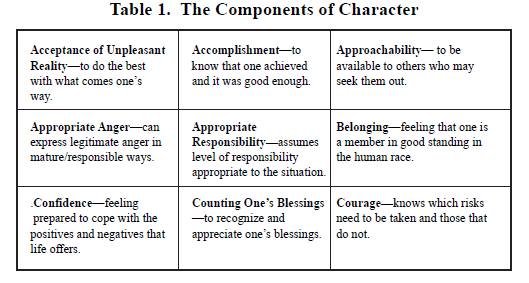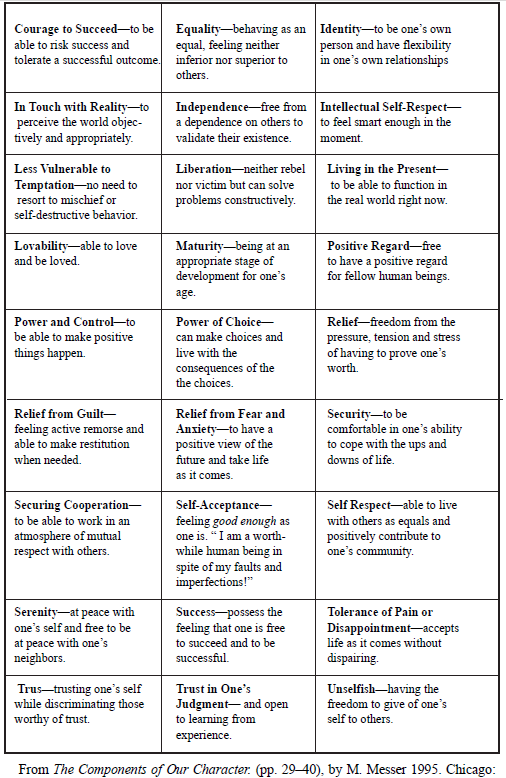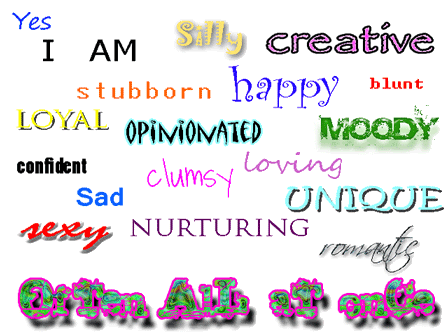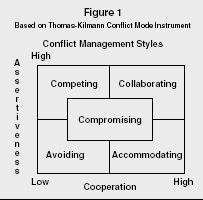Introduction
Encouragement is a basic element in our work as coachs and
therapists. Through the use of a new strategy, “directed
reflections,” we can go beyond encouragement, focusing on the
36 core components of character, and truly validate self-worth
and character. The results of this technique are profound and all
coachs/therapists can benefit from its application. In this article,
the strategy of directed reflections is defined and demonstrated.
Suggestions for use, such as in debriefing “homework” and in
character education, are offered.
Although Alfred Adler, the creator of Individual Psychology, did
not focus directly on character education, he did offer one of the
more important concepts to be found in the counseling
literature.
For Adler, the single criterion for “success” in life was embodied
in the extent to which the individual possesses “social interest.”
It is this concept that describes the ideal state of the individual’s
mental health or what we might term today as “character.” Adler
described social interest as being an aptitude or innate
potentiality for living cooperatively and contributing to the good
of others. However, according to Adler, social interest or
character had to be consciously developed (Milliren, Evans, &
Newbauer, 2003).
If we are to draw out and help develop social interest or
character in others, it is important that we validate it when we
see (or hear about) it happening. Our coachees report the
changes they are making all the time, yet we rarely see these
reports as opportunities for developing character. A chance
990

remark from a coachee “My wife and I were able to have a long
talk together last night”—presents a tremendous opportunity to
draw out character traits that are already there. We have an
opportunity to reflect the underlying character components and
thereby reinforce the life choices that our coachees are making.
Thus, character education can become an everyday opportunity.
Messer (2001) related character to the concept of self-respect.
He quoted Rudolf Dreikurs, a student of Alfred Adler, as defining
self-respect as “the feeling that one is a worthwhile human being
in spite of one’s faults and imperfections” (Messer,2001,p. 265).
This represents the “courage to be imperfect” that Dreikurs
discussed on numerous occasions (Terner & Pew, 1978) and is
the key to the development of character. Messer went on to say
that self-respect (or character) “is not expressed in terms of
‘knowing,’ but of ‘feeling.’ It is not based on objective conditions.
It is a subjective experience” (p. 265).
Table 1 lists 36 “characteristics” or components that help to
define one’s character. These serve as the traits or qualities that
can be directly reflected to a coachee in response to his/her
“success” report.
991

992
The intention of a directed reflection is to draw out the elements
of character that already exist for the person. The purpose is to
“tag” that inner core where belief in self lies. Try to “hear” the
following responses and note the differences.
(1) “How did you feel about that?”
(2) “You must feel good about how that turned out for you.”
(3) “It feels really good inside when you realize that you are
capable of handling things for yourself.”
The third example is a directed reflection. It is focused on the
feeling component of the experience (which is similar to the skill
of reflective listening, as in the second response above) as well as
on the character component that is being evidenced by the
person. It is this latter element that is so critical to identify in and
for the person.
We need to draw that component out in our responses and
demonstrate to the individual that he/she already is acting in
positive, useful, and constructive ways.
In the example that follows, the various components of
character, noted in Table 1, are deliberately reflected back to the
person. Each response is designed to capture a different
character component. In the example, these components are
noted in parentheses. We have discovered that it is best to use a
five-step response sequence that includes a variation of five
different components of character. This system seems to provide
a broader range of validation and is most reinforcing for the
coachee. At a minimum, a three-step system will suffice; at a
maximum, anything that exceeds five different responses
becomes overkill and begins to lose effectiveness.
In this example, a young woman is reporting what might be
termed a “negative” success. However, even in some of the
sadness about losing a relationship there are opportunities to
993
directly reflect the underlying positive elements of character that
made it possible for her to end the relationship.
YW: “I finally broke up with my boyfriend last night. You know,
he was pretty abusive to me.”
CO: “As much as that may hurt right now, you sound pretty
confident about what you did.” (Confidence)
YW: “I was kind of scared for a long time but I made up my mind
to do it and now it’s done.”
CO: “So, you overcame your fear and took a big step.” (Freedom
from Fear/Anxiety)
YW: “It was—especially for me—I don’t like to cause trouble.”
CO: “You’d rather keep the peace if you can but now you know
you can take charge like this yourself!”
(Power and Control)
YW: “I deserve better—he always put me down and told me I
was stupid.”
CO: “And you have more worth and value than that.” (Equality)
YW: “Duhhhhh! Of course I do!”
CO: “And now you are feeling really in control of the situation.”
(Independence)
YW: “Yeah. He wants to make up but I’m not interested any
more.”
You will note that the preceding example includes five different
directed reflections. This is important because we want the
person to really “hear” what we are saying. In the event that one
reflection of a character component does not quite take, we
increase the odds by adding the other four. The general outcome,
however, is that each of the directed reflections connects in some
994
way with the core of a person’s being and serves to reinforce
some aspect of the individual’s “inner self.”
Directed reflections require the skill of intelligent or “educated”
guessing. Guessing, whether right or wrong, allows the coach to
arrive at the core of the situation much more quickly than
endless fact-gathering and questioning. As we debrief the
“homework” our coachees have participated in, we can listen for
the components of character and use the directed reflections to
respond to the successful elements. However, as seen in the
example dialogue, we do not have to limit our responses to
positive experiences.
If we do not get reports of successes spontaneously, we might
wish to open our individual (and even group) contacts with
coachees with the following statements or questions:
“Tell me about one of your ‘wins’ or successes.”
“Tell me what you accomplished lately.”
“Have you done something new that you’ve never done before?”
“What kind of positive risks have you taken?”
Then, get set to listen and focus on the character component. If
the person’s first response does not seem to lead anywhere, then
an appropriate response might be: “And how was that for you?”
In classroom groups, we can select a story with a theme or
character issue. These stories can serve as a stimulus to our
discussions and directed reflections. We can ask, “Have you ever
had to make a similar choice?” “Tell me about it.” As the
student(s) relate their stories, respond to their telling with
appropriate directed reflections from the 36 components of
character.
995
Summary
The directed reflection is a new technique for validating the self-
worth and character of others. A directed reflection is a response
to another person that consists of a reflection of feeling coupled
with a statement of one (or more) of the 36 components of
character. For example, we might say: “You’re feeling really
pumped (a reflection of feeling) when you are in control of
yourself and can make positive things happen for you (two of the
components of character).”
Responses such as this provide an excellent means for debriefing
a coachee’s “success” experience. For the greatest impact, three
to five directed reflections should be used at any one time.
Conclusion
This strategy should only be used to “catch” character when it is
occurring. We cannot force the issue of character development.
We can only reinforce the appropriate components of character
when we have an opportunity to “observe” them in action. The
observations can be in “real” time or in the success stories others
tell us—but they
must exist. This is not a technique that serves as a subtle means
of imparting values when they are not there, even though such
action may be tempting. Moreover, it is not intended as a
technique for influencing behavior change, although this is also a
tempting alternative. When used inappropriately, genuineness
disappears and the words sound hollow and mechanical.
When used with appropriate timing and sincerity, directed
reflections usually catch just a little piece of the person’s core
beliefs. It is at that core where character and social interest
reside. The directed reflections go beyond merely encouraging
another person. As Messer (2001) explains, we are helping the
individual discover the he/she is a worthwhile human being in
spite of his/her faults and imperfections.
996
Source:
Al Milliren and Linda Maier
Messer, M. (2001). Managing anger. Chicago, IL: Anger Institute.
Messer, m. (1995). The Components of Our Character. Chicago,
IL: Anger Institute.
Milliren, A. P., Evans, T. D., & Newbauer, J. F. (2003). Adlerian
counseling and psychotherapy. In D. Capuzzi, & D. R. Gross,
(Eds.), Counseling and psychotherapy: Theories and
interventions. Upper Saddle River, NJ: Merrill – Prentice Hall.
Terner, J. & Pew, W. L. (1978). The courage to be imperfect: The
lifeand work of Rudolf Dreikurs. New York: Hawthorn Books
Relaxation and scripts for self-help, personal change and
fulfilment
I am
I deserve to be, - I want to be, - I can be, - I will be, - I am
If you want to change your life you need to change how you
think and change what you do. Self-help, personal change, being
happy: it's up to you. No-one else.
You decide. This is the first step. Self-help starts with you. Self-
help and personal change starts with your realisation that it
really is in your own hands, and your decision to do something
about it.
Your own self-belief is the key to successful life-change,
achievement, contentment, and happiness.
Your own mind, particularly positive suggestion and
visualisation, will develop your self-belief, and your
determination to make successful change to your life.
997
This page will help you begin to change the way you think, feel
and act.
Visit it any time you want to boost your self-belief, to relax, and
to regain control of your life and direction.
Print this page and put it above your mirror, above your bed,
above your desk, anywhere you'll see it every day.
Make time - actually schedule some time in your planner or diary
to do this. It will dramatically improve your mood, attitude, and
approach to life, and therefore what you get from life.
Positive suggestion and visualisation, combined with deep
relaxation, is an easy way to make powerful positive personal
change.
Just going through this relaxation exercise alone will help to
change and improve the way you feel. If you combine the
relaxation techniques with a repeated script of positive
statements, such as the 'I am' script below, you will begin change
the way you think, and feel, and act, and all that life offers as a
result.
The more you use the relaxation exercise and say or hear the
script, then the greater and more sustainable will be the effect.
The time it takes to change depends on different people. Stick
with it and it will become easier, more natural, more enjoyable,
and it will work.
Relaxation exercise
1.
Sit or lie down comfortably. Properly comfortably.
Straighten your back, put your shoulders back to open your
rib-cage.
2.
Relax your shoulder muscles particularly. Relax your whole
body, and empty your mind.
3.
Close your eyes (obviously open them when you need to
read the next stage).
998
4.
Take ten deep, slow breaths. Breathe from the pit of your
stomach and feel your lungs filling.
5.
Focus on your breathing. Feel it getting deeper and slower.
Feel yourself relaxing and any tension drifting away.
6.
Relax your shoulders and neck again.
7.
Visualise yourself being happy, succeeding, winning, being
loved, laughing, feeling good.
8.
Relax your forehead, your mouth and your eyes.
9.
Allow a gentle smile to appear on your face as you feel a
calmness enter your mind.
10. Then say (out load ideally) the words below (a script for
personal change) to yourself:
I am
I am good person.
I have integrity.
I do what is ethically right and good.
Whatever life puts before me will be useful experience that
will make me stronger, wiser, and more tolerant.
I am strong enough to understand and make allowances for
other people's weaknesses, and their behaviour towards
me. Other people's behaviour is about them, not me.
I focus on the joy of living my life and helping others where
and when I can.
I am what I eat and drink, so I eat and drink good things.
I am what I watch and play and listen, so I watch and play
and listen to good positive things.
I take exercise which I enjoy. I walk when I don't need to
drive or take the bus or train.
999
I smile and laugh whenever I can - life is good - getting
caught in the rain reminds me that it is good to be alive to
feel it.
I forgive other people. Deep down everyone is a good
person, just like me.
I am a compassionate and loving, caring person.
I am a good person.
I am.
Using and changing scripts - what the 'i am' words mean
The 'I am' element alone is a powerful one because it embodies
the sense of self-determination, which nobody and nothing can
ever take away from you, and it emphasises the value of simply
'being'.
We each exist as a person of value and worth in our own right,
irrespective of possessions and achievements. Accepting and
reinforcing this concept is good for each of us. This, at its
simplest level, is what 'I am' means.
"There is wisdom in accepting what you are. It is difficult to be
what you are not. Being what you are doesn't require any effort.
When you become wise, you accept yourself the way you are,
and the complete acceptance of yourself becomes the complete
acceptance of everyone else." (From 'The Mastery of Love' by
Don Miguel Ruiz, with thanks to Allspirit.co.uk)
You can use the relaxation exercise, combined with a script, to
change many aspects of your life and feelings.
You do this by adding, removing, or replacing statements in the
script.
Keep the statements positive and in the present tense.
1000
For example, if you want to be more confident, use a statement
such as 'I am a confident person' rather than 'I will be a more
confident person' or 'I will try to be a more confident person'.
If you want to stop smoking, use a statement such as 'I am a non-
smoker, because I value my life and body' rather than 'I will try
to give up smoking'.
If you do not want to give up smoking, merely to cut down,
adjust the script accordingly, for example: 'I smoke only
five/ten/fifteen cigarettes a day, because this is improving my
health and my life' (better than smoking twenty or thirty day).
If you keep telling your sub-conscious that you 'are', then in time
you will 'be'.
Use script statements that describe yourself as you want to be.
Repeating positive scripts, combined with deep relaxation, will
change your behaviour from deep within.
Making tapes or script recordings
You can increase the ease of using scripts if you make a tape or
CD recording of yourself reading your script. You can then use
the recording any time you want.
Using a recording also means you can relax completely while
listening to the words, with no need to open your eyes to read.
You can also listen to your recorded script at bed-time, before
you go to sleep every night, which is also an effective way to
reach and change your sub-conscious feelings.
Be assured...
Most people judge themselves against entirely artificial criteria.
Material success is not what life is about.
You can change your frame of reference. You do not have to
accept a frame of reference that others have given you.
1001

Many of the most materially 'successful' people are deeply
unhappy, yet they strive and search (unsuccessfully) even harder
for more material success.
Most ordinary good, honest 'being' people are fooled into
believing that what they have is not worth anything. Don't be
fooled.
The answer to happiness and fulfilment is usually found in
achieving a simple acceptance of, and joy of living, a good life.
Enjoy 'being' and living a good life.
Next time you get caught in the rain, or bump the car, or get a
headache - enjoy being alive to feel it and experience it.
(With acknowledgements to Carole Byrd and Buddha Maitreya.)
Source: http://www.businessballs.com/selfbelief.htm
1002
IF - by Rudyard Kipling (1865 – 1936)
If you can keep your head when all about you
Are losing theirs and blaming it on you,
If you can trust yourself when all men doubt you,
But make allowance for their doubting too;
If you can wait and not be tired by waiting,
Or being lied about, don't deal in lies,
Or being hated, don't give way to hating,
And yet don't look too good, nor talk too wise:
If you can dream - and not make dreams your master,
If you can think - and not make thoughts your aim;
If you can meet with Triumph and Disaster
And treat those two impostors just the same;
If you can bear to hear the truth you've spoken
Twisted by knaves to make a trap for fools,
Or watch the things you gave your life to, broken,
And stoop and build 'em up with worn-out tools:
If you can make one heap of all your winnings
And risk it all on one turn of pitch-and-toss,
And lose, and start again at your beginnings
And never breathe a word about your loss;
If you can force your heart and nerve and sinew
To serve your turn long after they are gone,
And so hold on when there is nothing in you
Except the Will which says to them: "Hold on!"
If you can talk with crowds and keep your virtue,
Or walk with kings - nor lose the common touch,
If neither foes nor loving friends can hurt you,
If all men count with you, but none too much;
If you can fill the unforgiving minute
With sixty seconds' worth of distance run,
Yours is the Earth and everything that's in it,
And - which is more - you'll be a Man, my son!
1003

4.7 RESOLVING CONFLICT
Kenneth W. Thomas and Ralph H. Kilmann
PUBLISHED BY CONSULTING PSYCHOLOGISTS PRESS, INC.
Copyright 1974, 2001 by Xicom, Incorporated. Xicom,
Incorporated is a subsidiary of Consulting Psychologists Press,
Inc. All rights reserved.
The Five Conflict-Handling Modes
The Thomas-Kilmann Conflict Mode Instrument (TKI) is designed
to assess an individual’s behavior in conflict situations - that is,
situations in which the concerns of two people appear to be
incompatible. In such situations, we can describe a person’s
behavior along two basic dimensions: (1) assertiveness, the
extent to which the individual attempts to satisfy his or her own
concerns, and (2) cooperativeness, the extent to which the
individual attempts to satisfy the other person’s concerns. These
two basic dimensions of behavior can be used to define five
specific methods of dealing with conflicts. These five "conflict-
handling modes" are shown below.
1004
1. Competing is assertive and uncooperative, a power-oriented
mode. When competing, an individual pursues his or her own
concerns at the other person’s expense, using whatever
power seems appropriate to win his or her position.
Competing might mean standing up for your rights, defending
a position you believe is correct, or simply trying to win.
2. Accommodating is unassertive and cooperativ







